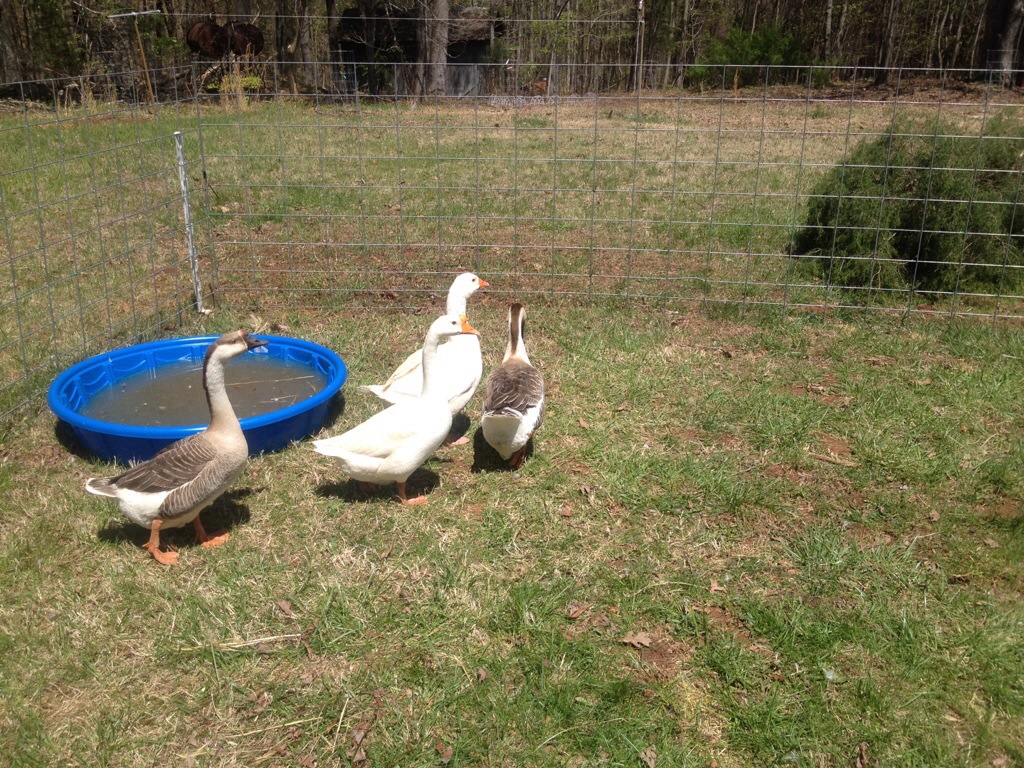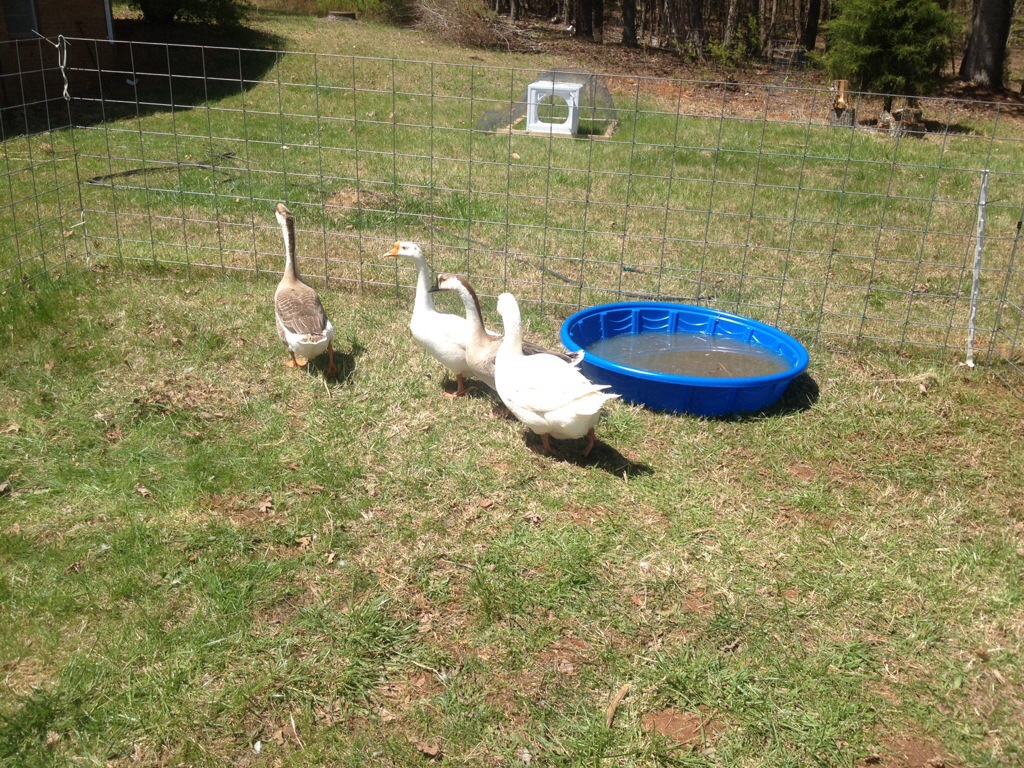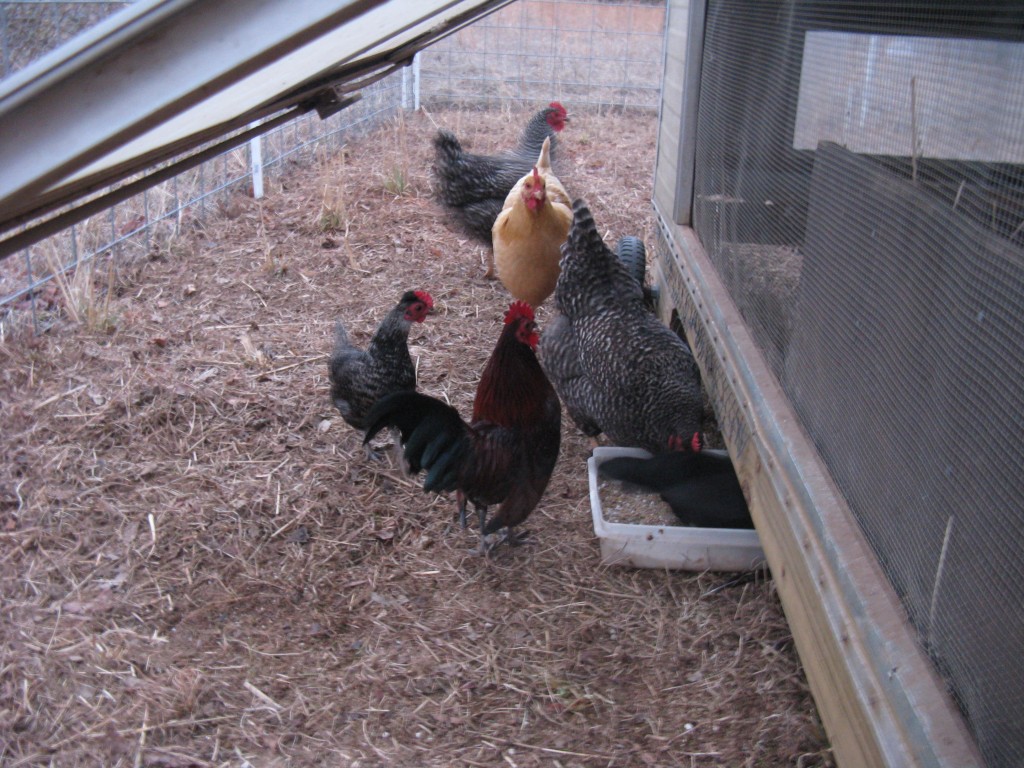I’ve been thinking a lot lately about the coming year. With the nice rise in temperature we’ve been experiencing, it’s hard not to think about spring and I find myself contemplating next year’s garden and livestock plans. On the garden front, we have some thoughts on expanding our vegetable garden and putting in more raised beds. We’re starting our mushroom crop this year but I’d also like to put in hundreds of trees, bushes, and vines in a more perennial system, a food forest that follows permaculture principles and techniques.
On the animal front, we already have a couple dozen chickens, mostly standards but some bantams as well, and I think we’ll try splitting them up and running the bantys in a chicken tractor setup. I’m hoping this will give them better access to food and forage, and a chance to lay more eggs and possibly go broody and hatch some chicks.
I’ve also thought a good bit about expanding our livestock operations. I don’t think we need or want any more chickens, other than the young bantam chicks if that should occur, but there is a type of bird that I would like to raise and that I think will work well on our homestead. Geese.
After hearing about Jack Spirko’s successful goose pursuit, I am sold on geese. He’s had excellent weight gains on almost nothing but grass, and we have a good bit of grass. Predator issues aren’t as big of a concern with geese, whose size and group behavior is more intimidating to raccoon, possums, etc. When they are young this probably won’t hold true, so we’d have to deal with that. I can see us running a few geese through our upper yard, maybe with portable fencing, or maybe more “free range” if we somehow seal off the garden from them.
Another species I’m interested in is the good ole pig. But not any good ole pig, pot bellied pigs. I like their small size, good foraging ability, and the fact that they are a lard pig. MMMMnnn… bacon… bacon grease… and lard. Awesome. Topping out at around 70-150 lbs., butchering one of these succulent hogs wouldn’t be the chore most standard sized hogs are. Their small size should also mean that they’ll do less damage on the land, and on fencing as well. Though I hope it doesn’t mean that they turn into some sort of psuedo-goat-pig that can simultaneously climb and plow through fences.

I don’t yet know how to tackle the fencing issues for pigs, but I’d like to raise them at least partially in the woods and on the forest edge where they scrounge up all kinds of goodies like mast drop and black berry. An idea Emma had was to use some of the abundant medium sized pine trees as living fence poles for welded or woven wire fencing. Pigs would provide both a yield of meat and high quality fat, while at the same time being able to clear and prepare land for future planting. This function stacking makes them a great choice for a permaculture homestead, and is why I’m so excited about potentially raising them on ours.
The last livestock animal that may find itself on our farm next year is another great function stacker. Compost worms. I’m getting really excited about vermicomposting and its wonderful benefits and outputs. As livestock, worms can be used to compost vegetative material, as a protein source for other animals and for their nutrient and microbe rich “worm juice/tea”. Organic material is never hard to come by on a homestead, so passing some of our excess through the worms and turning it into some of the best organic fertilizer available seems to make sense.

As worm populations can double every 90 days, and compost worms can eat their own weight every day, with about 60% conversion to harvest-able vermicompost (not including worm juice runoffs), a small worm farm or bin can be a huge asset to the small farm or permaculture homestead, both in terms of fertility and potentially as a sideline business.
We are not yet sure which of these livestock we may add to our homestead this year, if any, but I do plan on pursuing them in the future. Pot bellied pigs, geese, and compost worms are in our future. We just need to think a little more about execution and where exactly they fit into our system. We’ll see, and we’ll be sure to tell you about it!




